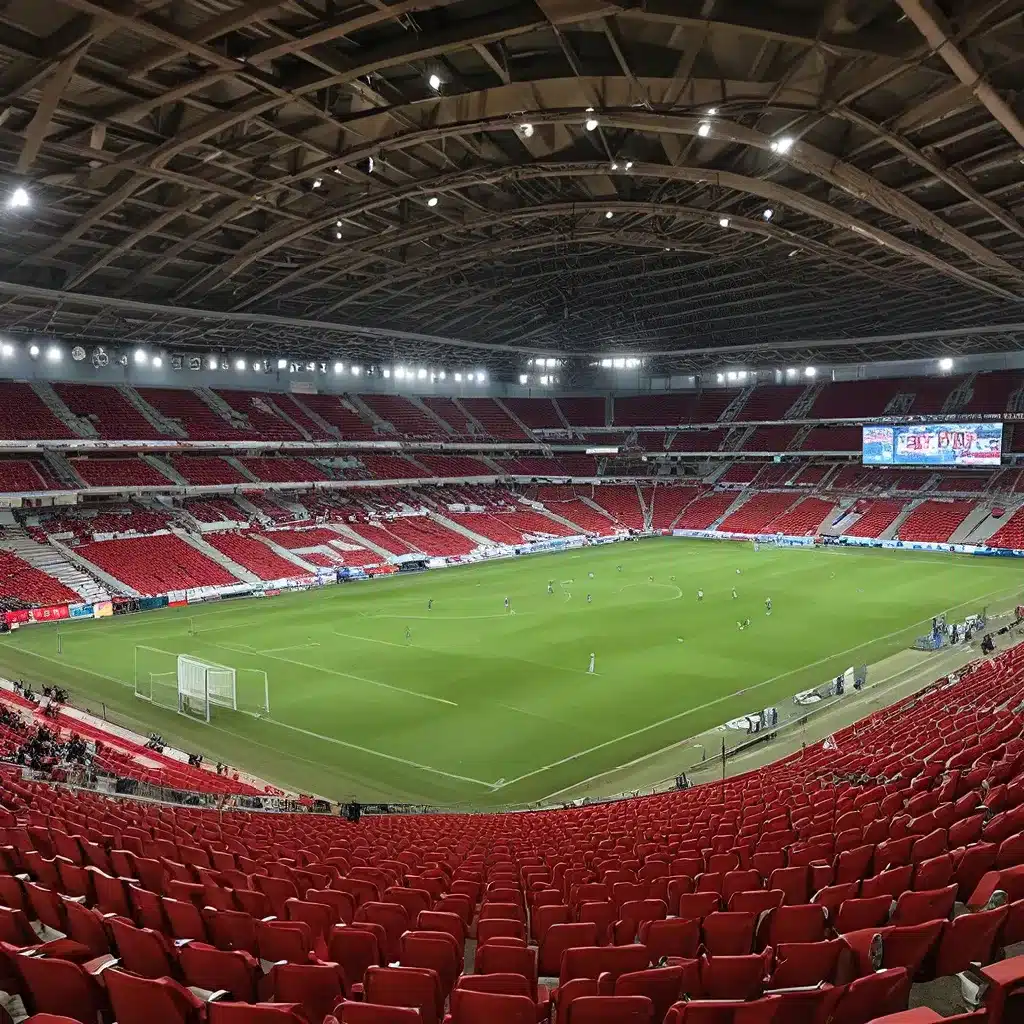
The History and Evolution of Seville’s Premier Football Venue
The Estadio Ramón Sánchez Pizjuán in Seville, Spain, has long been the beating heart of the city’s passionate football culture. This hallowed ground, home to the illustrious Sevilla FC, has witnessed some of the greatest moments in Spanish and European soccer history. From hosting international tournaments to serving as the backdrop for epic Champions League encounters, the stadium has cemented its place as one of the most iconic venues in the world.
The stadium’s origins trace back to 1937 when the then-president of Sevilla FC, Ramón Sánchez Pizjuán, first acquired the land and began the process of building a new home for the club. However, it was not until December 1956 that the groundbreaking ceremony took place, and the stadium was finally opened in September 1958, though it would take until 1974 for the facility to reach its full capacity of 77,000 spectators.
The Estadio Ramón Sánchez Pizjuán’s early years were marked by significant events, including hosting matches during the 1982 FIFA World Cup. This international exposure helped cement the stadium’s reputation as a world-class venue and a symbol of Seville’s passion for the beautiful game.
Architectural Grandeur and Continuous Upgrades
The stadium’s distinctive architectural features have always been a source of pride for Sevillian fans. The beautiful mosaic adorning the stadium’s façade, created in 1982 as part of the World Cup renovations, has become an iconic landmark, instantly recognizable to football enthusiasts around the globe.
Over the years, the Estadio Ramón Sánchez Pizjuán has undergone a series of significant upgrades and renovations to keep pace with the evolving demands of modern football. In the 1990s, the stadium saw a major overhaul, with all standing sections replaced by seating, and the facilities and technological systems modernized.
In 2015, Sevilla FC announced the biggest upgrade to date, including a complete replacement of the stadium’s seats, a transformation of the facades, and a comprehensive revamp of the interior infrastructure. This multi-year project, which is still ongoing, aims to transform the Estadio Ramón Sánchez Pizjuán into a cutting-edge sports complex that can compete with the best stadiums in Europe.
Hosting European Triumphs and Cutting-Edge Upgrades
The Estadio Ramón Sánchez Pizjuán has not only been a stage for Sevilla FC’s domestic success but also a platform for their remarkable achievements in European competitions. The stadium has been the proud host of numerous UEFA Europa League finals, including the 2022 edition, when Eintracht Frankfurt emerged victorious over Rangers in a thrilling penalty shootout.
The future of the Estadio Ramón Sánchez Pizjuán looks equally promising, as Sevilla FC has announced plans for a new, state-of-the-art stadium to be built in the coming years. While the details of this project are still in the planning stages, the club has emphasized the importance of listening to the voice of the fans and ensuring that the new facility meets the needs and expectations of the passionate Sevillian supporters.
A Vision for the Future: Transforming Seville’s Soccer Legacy
As the 2030 FIFA World Cup looms on the horizon, with Spain and Portugal poised to submit a joint bid, the Estadio Ramón Sánchez Pizjuán is likely to play a crucial role in the country’s hosting plans. The stadium’s rich history, architectural grandeur, and continued renovations make it a prime candidate to host matches during this prestigious global event.
The upcoming Europa League final scheduled for the Estadio Ramón Sánchez Pizjuán in 2023 could very well be the last major event at the stadium in its current form, as the club’s vision for a new, modernized facility takes shape. This transition will undoubtedly mark a significant chapter in the history of Sevillian soccer, as the city prepares to usher in a new era of football excellence.
Conclusion: A Legacy of Passion and Persistence
The Estadio Ramón Sánchez Pizjuán stands as a testament to the enduring passion and persistence of Seville’s football community. From its humble beginnings to its current status as a world-class venue, this stadium has witnessed the triumphs and heartbreaks of generations of Sevillian fans, cementing its place as a cherished symbol of the city’s unwavering devotion to the beautiful game.
As Sevilla FC embarks on the journey to build a new, cutting-edge stadium, the Estadio Ramón Sánchez Pizjuán will undoubtedly remain a revered part of the city’s sporting heritage, inspiring future generations of fans and players alike. The stadium’s legacy, like the city it calls home, is one of resilience, innovation, and a deep-rooted love for the sport that has captivated the world.
Explore more stadiums and their fascinating stories on Old Stadium Journey, a comprehensive resource for fans and enthusiasts of the world’s most iconic football venues.

